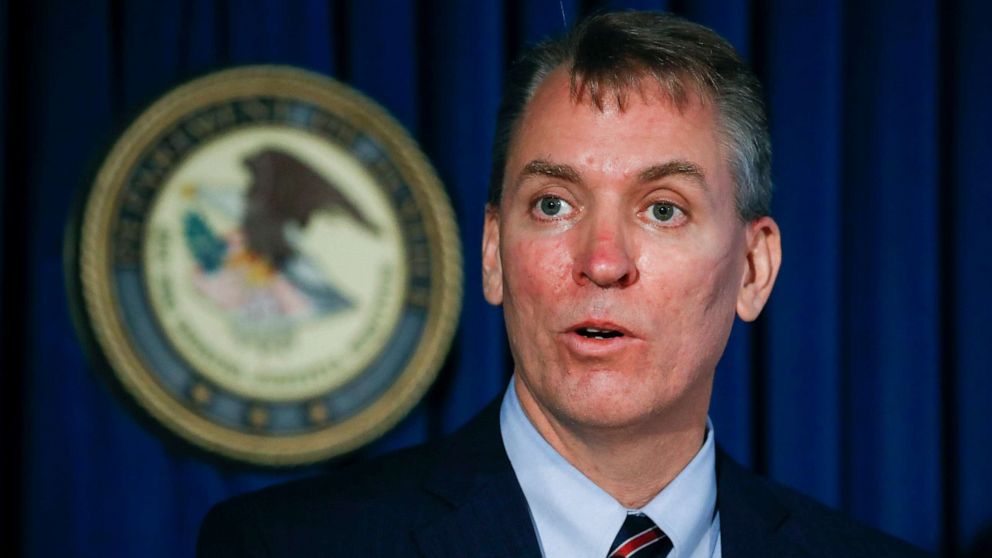[ad_1]
Two weeks of protests and unrest in New York City after the death of George Floyd only intensified the overwhelming distrust many feel toward the New York City Police Department, the state’s attorney general, Letitia James, concluded in a preliminary report.
Released on Wednesday, the document, “New York City Police Department’s Response to Demonstrations Following the Death of George Floyd,” doesn’t render a specific judgment on the performance of officers, but it does state: “It is clear that too many New Yorkers no longer trust the police to do their jobs effectively and fairly.”
James also said at a press conference that after three days of public hearings, in which she heard from protesters and Police Commissioner Dermot Shea, the commissioner’s testimony on the events was “at odds with the vast majority of the protesters who came before us.”
“The police should not police themselves, period, and it requires change and it requires reform,” James said. “Why is this one agency treated so differently than all of the others?”
According to the report, from May 28 to June 7 there were 2,087 protest-related arrests, about 190 per day. The vast majority, nearly 1,500, were in Manhattan, and among all arrested 44% were white, 39% were Black and 13% were Latino. But the data also shows that only 3% of white individuals and 8% of Latinos were charged with felonies, while for Black individuals that figure was 16%.
The majority of the arrests came on May 31, when James said businesses were looted, and between June 2 and June 6, the days of the 8 p.m. curfew, which, according to the report, “was a significant driver of arrests.”
The report also noted that on the evening of June 3, there was an increase in the number of peaceful protesters out after 8 p.m., along with an increase in stricter police enforcement.
James heard testimony from protesters who said that NYPD officers used pepper spray, indiscriminately and excessively, numerous times. In one instance, a person testified being struck on her lip with a baton and having her face mask fill with blood.
She went on to say that she heard a white NYPD officer say to a white protester, “Well, you wanted to be in the hood — welcome to it.”
Fewer than 10 officers were disciplined for behavior during that span of protests, according to data Shea provided James for her report.
Zellnor Myrie, a state senator who attended the May 29 protest, testified that he intentionally wore a neon shirt with his name and his title so he would be easily identifiable. However, he said, despite the peaceful nature of the protest and clearly identifying himself, officers “pepper-sprayed him without justification and temporarily detained him without providing prompt medical attention to address his injuries.”
Shea testified that he disagreed with protestors’ allegations that officers misused pepper spray, insisting instead that officers exercised “incredible restraint.”
Shea said that a video showing two police cars driving into protesters, some of whom had been throwing objects at the vehicle, did not violate the department’s use-of-force policy because the officers’ vehicles were “penned in by protesters” and “set upon and attacked.”
A spokesman for the New York City Police Department said James’ report was “of course a political and not an investigate document.”
“Rather than rehash rhetoric we should come together — state and local law enforcement and elected officials — and confront and solve the crisis at hand,” Richard Esposito, deputy commissioner for public information, told ABC News.
Police Benevolent Association President Patrick Lynch said in a statement to ABC News, in part: “The report tells only one side of the story and delivers reheated proposals that have been part of the anti-police agenda for decades.” Healing the rift between officers and citizens requires “giving meaningful consideration to the perspective of police officers on the street.”
The report made several recommendations, including that the NYPD must be overseen by a commission that has the authority to hire and fire NYPD leadership, including the commissioner, has unfettered access to records and approves NYPD’s budget.
The commissioner currently has “full power” over whether to fire an officer, James said.
The report also recommended that all police officers in New York be certified through a process that allows for “decertifying” officers engaged in misconduct, which would prevent them from being rehired by another police department elsewhere in the state.
A final recommendation was that police officers must be held to uniform standards on the use of non-lethal and deadly force and face meaningful consequences for violations.
“One report and one set of recommendations will not solve this problem,” James said, “but it does offer concrete steps towards progress.”
[ad_2]
Source link

